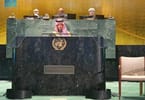Is it necessary for Hawaii’s travel industry to be suffering so?
As a meetings industry executive, it was tough for me to watch the nation’s hotels take their bruises last year. One survey reported that average hotel occupancy levels across America fell nearly 9 percent in 2009 to just above 55 percent. And as a Hawaii native, it was especially painful to witness my home state’s troubles with the travel industry – so vital to its economy.
Hawaii’s occupancy rate, at an average 66.5 percent last year, was enviable compared to the national figures. But the pain was and still is there: Hawaii’s hotel revenues in 2009 dropped by US$741 million to US$3.59 billion, driven by falling occupancies, room rates, and other hospitality indicators.
The good news is that there’s a prescription for what ails Hawaii’s travel industry: a multi-front campaign by government and business to increase groups and meetings travel, complementing the state’s already strong identification with leisure tourism.
Hawaii’s Got it All for Meetings
Hawaii’s got much to offer for meetings travel: numerous flights (many of them direct) from around the world; the Hawaii Convention Center’s 200,000 square feet of exhibition space and nearly 150,000 square feet of total meeting space; more than 70,000 hotel rooms (10,000 within walking distance of the Convention Center); stunning natural beauty and an average year-round temperature (77 degrees) that many on the mainland US only see in summer.
Yet, in 2008, the number of visitors staying overnight or longer on Hawaii’s six islands fell more than 10 percent from the year earlier, including a 12 percent drop among domestic visitors. This was partly due to consumers reining in spending on vacations. But, from where I sit, it can be traced to companies cutting back on meetings travel, under pressure to cut budgets. Also, unfortunately, it became somewhat risky for companies to have a meeting in a place like Hawaii. There were several high-profile articles in the media criticizing companies – especially those who’d received federal government TARP assistance – if they held important meetings in destinations that were perceived to be luxurious or exotic.
And, of course, it doesn’t help that major airlines have been cutting capacity to Hawaii and raising fares. As a result, it makes sense for companies to meet closer to their home bases or conduct virtual events.
Government/Travel Industry Collaboration Needed
So how can Hawaii fight these trends? Hawaii’s government and travel sectors need to roll up their sleeves to create a campaign to get corporate and association meeting planners to see the value of hosting meetings and events. The messages should be that Hawaii is:
• A great place to do business (with plenty of meetings and convention facilities) – not just for surfing and beaches.
• Rich in people resources! Multi-lingual and multi-cultural residents, as well as an educated workforce of University of Hawaii graduates, can support business’ needs for successful meetings today and in the future.
I don’t mean to imply that Hawaii is giving up the fight for more meetings business. I applaud recent efforts by Hawaii’s travel industry to draw in more meetings business, such as the week-long “Hawaii Prospect Sales Blitz,” organized by the Hawaii Visitors and Convention Bureau’s (HVCB) Corporate Meetings and Incentives division, chapter bureaus, and the Hawaii Convention Center. (In that effort, the partners called 10,000 leads to sell Hawaii as a business destination.)
But what I’m advocating is a collaborative effort involving multiple government agencies and the travel industry to help raise awareness levels that Hawaii is a superior meetings destination. Possible strategies would include:
• Funding and dedicated resources to hold a series of trade fairs showcasing Hawaii’s meetings attractions and infrastructure; downplaying the luxury and leisure themes and focusing on logistics information and data.
• State tax breaks for companies, associations, and other groups holding meetings in Hawaii.
• Forming partnerships with hotels and other suppliers to create new, more creative incentive packages for companies looking to hold meetings in the state.
• Creating courses on strategic meetings management, internship, and scholarship opportunities at the University of Hawaii’s School of Travel Industry Management to attract and keep more locals working in our industry; this is yet another reason to maintain the specialized autonomy of the TIM School.
• Reaching out to the many wonderful professional business travel and meetings associations, such as the National Business Travel Association, that can offer wisdom and best practices in this area.
The long-term ramifications of not moving forward means Hawaii will continue to fall further behind in the business travel marketplace and will be forever regarded as a leisure destination or, by some, as a luxury-only meetings locale. Now is the time for Hawaii to broaden its horizons and attract a wider base of meetings and events business! The future of business travel to the state depends on a solid move-forward strategy.
Kevin Iwamoto, is a former resident of Honolulu and a University of Hawaii, School of Travel Industry Management (TIM) graduate. He earned his Masters Global Leadership Professional (GLP) designation from the Wharton School of Business. Mr. Iwamoto is currently VP of Enterprise Strategy at Philadelphia-based StarCite, Inc., which provides global web-based solutions to help buyers and suppliers strategically manage corporate meetings and events. Iwamoto is a highly-respected and recognized business travel industry leader with 20-plus years experience managing corporate travel and meetings programs. He was president & CEO of the National Business Travel Association (NBTA) from 2001-2003, where he founded the global Paragon Partnership organization and forged a relationship between NBTA and Meeting Planners International and created the NBTA Groups and Meetings Committee. Kevin has also won every major travel industry award and recognition, culminating in 2009, when he received the NBTA’s “Industry Icon Award,” the association’s highest honor. The award recognizes outstanding lifetime contributions to the managed travel and meetings industry. At StarCite, Iwamoto also writes the popular blog, Strategic Meetings Management. http://blog.starcite.com/blog/strategic-meetings-management-2 He is highly sought after by the global media as a subject matter expert for business travel and strategic meetings management.
WHAT TO TAKE AWAY FROM THIS ARTICLE:
- I applaud recent efforts by Hawaii's travel industry to draw in more meetings business, such as the week-long “Hawaii Prospect Sales Blitz,” organized by the Hawaii Visitors and Convention Bureau's (HVCB) Corporate Meetings and Incentives division, chapter bureaus, and the Hawaii Convention Center.
- Hawaii's government and travel sectors need to roll up their sleeves to create a campaign to get corporate and association meeting planners to see the value of hosting meetings and events.
- • Creating courses on strategic meetings management, internship, and scholarship opportunities at the University of Hawaii's School of Travel Industry Management to attract and keep more locals working in our industry.






















